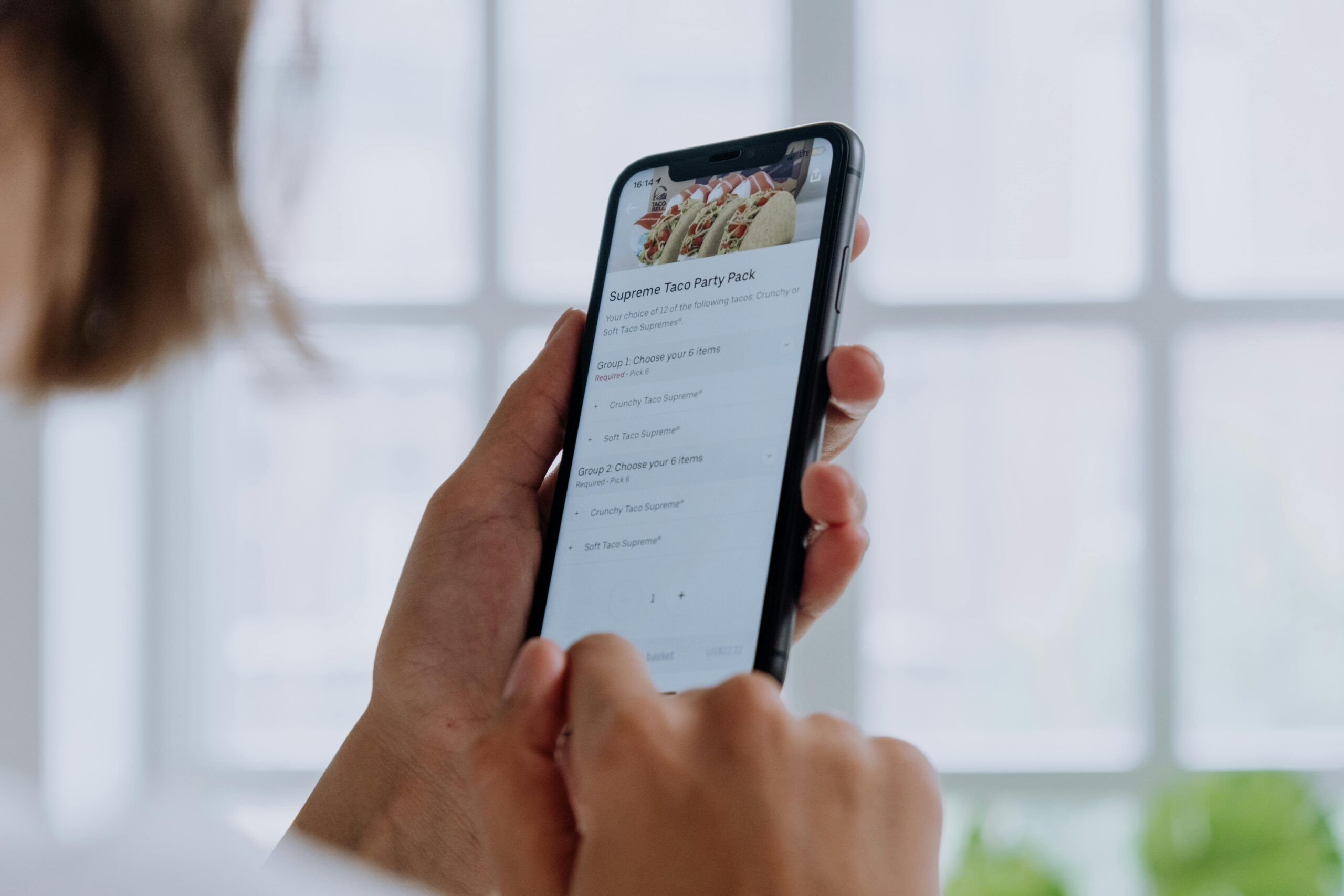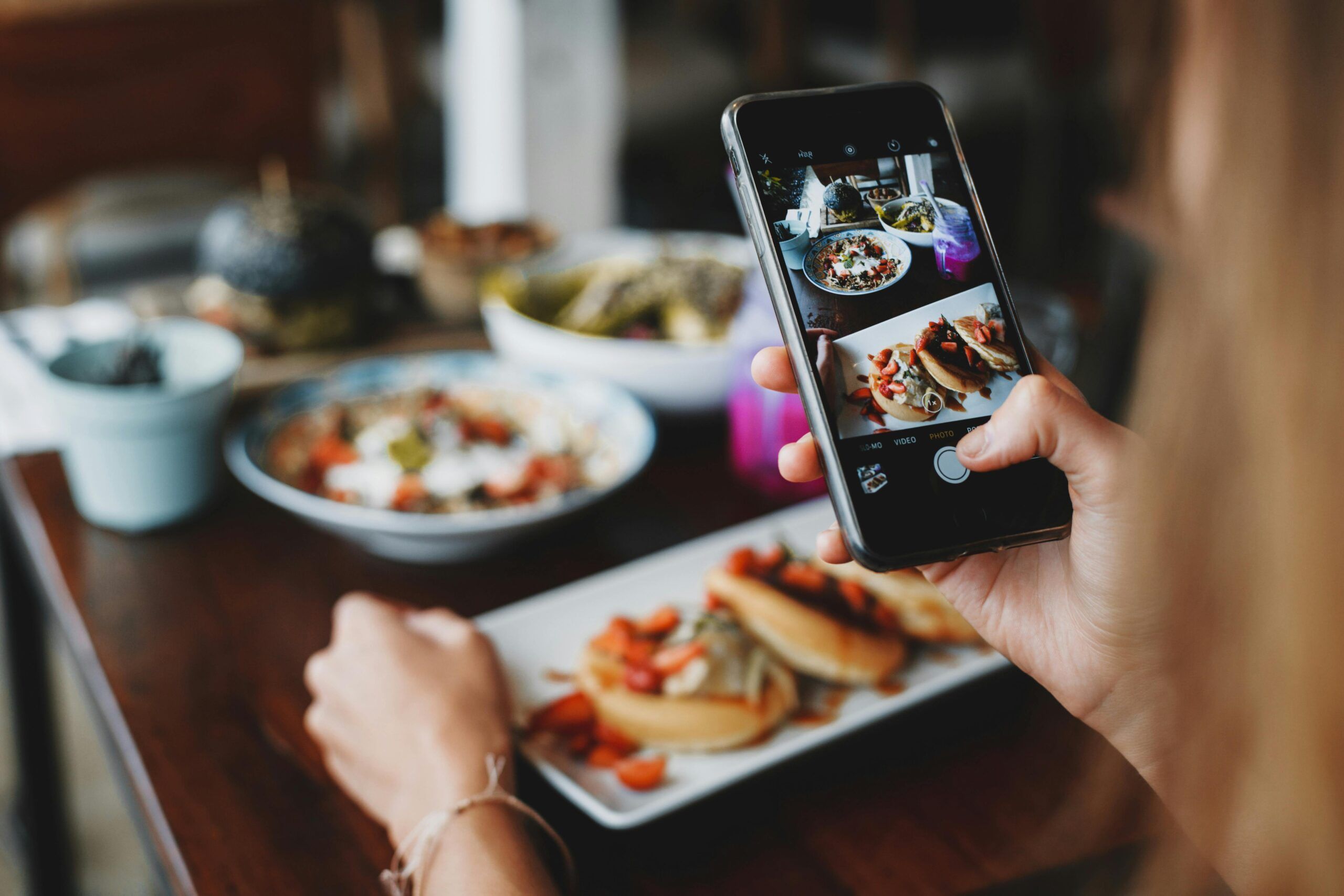- The Menu Engineering Framework: Profitability + Popularity
- Step-By-Step: How To Engineer Your Menu
- Menu Engineering For Online, Takeout, And Delivery
- How Menu Engineering Helps Reduce Waste & Control Costs
- Marketing Your Newly Engineered Menu Automatically
- Ongoing Menu Monitoring | It’s Not One and Done
- Simplify Menu Engineering With Orders.co
- FAQ
Menu engineering is a strategic approach to designing your menu to increase profitability. It’s not about adding more items; it’s about using sales data and thoughtful layout to guide customers toward dishes that are both popular and profitable.
A well-engineered menu can lead to higher check averages and better profit margins. For instance, studies have shown that descriptive menu labels can increase sales by up to 28% and boost the perceived value of dishes by 12%.
Learn how to apply menu engineering to analyze sales, price items, design your menu, and keep it updated across all channels.
If you’re looking to simplify this process, Orders.co offers a comprehensive Restaurant Menu Management tool. It allows you to manage your entire menu in one place, update all platforms simultaneously, and make informed pricing decisions.
Key Takeaways
- Menu engineering helps you focus on profitability and popularity, not just adding more dishes.
- Use sales data to sort menu items into Stars, Plowhorses, Puzzles, and Dogs.
- Design your menu layout to highlight your most profitable items where customers see them first.
- Apply menu engineering to both dine-in and online menus, with clear photos and simple choices.
- Orders.co simplifies menu engineering with one dashboard for updates, pricing, marketing, and reporting.
The Menu Engineering Framework: Profitability + Popularity
Menu engineering works best when you focus on two things: how much profit each dish brings, and how often customers order it.
That’s where the restaurant menu matrix comes in. It helps you sort every menu item into four groups:
1. Stars (High Profit, High Popularity)
These are your best items. Customers love them. You make a strong profit on each sale. Keep these front and center on your menu. Promote them often.
2. Plowhorses (Low Profit, High Popularity)
These sell well, but don’t make much money. You can adjust portions, switch ingredients, or raise the price carefully to improve profits.
3. Puzzles (High Profit, Low Popularity)
These make good profit when they sell, but customers don’t order them much. You might need to improve the description, change where it’s placed on the menu, or let staff recommend it more.
4. Dogs (Low Profit, Low Popularity)
These don’t sell often and don’t bring in profit. In most cases, it’s best to remove them from the menu. That frees up space for better-performing items.
Why This Matters for Your Restaurant
Many restaurant owners build menus based on what they like to cook or serve. But menu engineering helps you make decisions based on real sales data. It shows you which items help your bottom line.
With Orders.co, you don’t need to track this manually. The Restaurant Menu Management system pulls your sales data together, so you can see what’s working and what’s not, all in one place.
You’ll know which items bring in profits and which ones need changes. That’s menu engineering done in a way that saves you time and grows your business.
Step-By-Step: How To Engineer Your Menu
You don’t need expensive consultants to apply menu engineering. You can do it yourself by following a few simple steps. Here’s how:
Step 1. Analyze Your Sales Data
Start by looking at your sales. You need to know:
- How many of each item you sold.
- How much each dish costs to make (food cost).
- What profit each dish brings (contribution margin).
You can pull this from your POS or order reports. If you work with multiple delivery apps, this is where things often get messy. That’s why many restaurants use Orders.co. With Restaurant Menu Management, your sales from Uber Eats, DoorDash, Grubhub, and your own website all come together in one report.
Step 2. Categorize Items into the Menu Matrix
Now that you have your data, sort your menu items into:
- Stars: High profit, high sales.
- Plowhorses: Low profit, high sales.
- Puzzles: High profit, low sales.
- Dogs: Low profit, low sales.
This tells you exactly where to focus your attention. You’re no longer guessing what sells.
Step 3. Redesign Your Menu Layout
Once you know which items matter, design your menu to highlight them:
- Place Stars in the spots customers see first.
- Use simple boxes or bold text to draw attention.
- Limit highlights to one or two items per section.
- Keep the layout clean. Avoid price columns or dotted lines leading to prices.
- Use the “Golden Triangle” rule: Customers first look at the top-left, then top-right, then center.
Step 4. Write Better Menu Descriptions
Your descriptions should help customers choose the items you want to sell.
Bad: “Chicken Sandwich”
Better: “Grilled chicken breast, toasted brioche bun, house-made aioli, and crisp lettuce.”
Use words that highlight freshness, preparation, and quality. This adds value without raising your food cost.
Step 5. Sync Your Menu Across All Platforms
This is where many restaurant owners lose hours every month.
You update your dine-in menu. Then Uber Eats. Then DoorDash. Then Grubhub. Then your website.
Step 6. Update Pricing Based on Data
Now that you’ve engineered your menu, adjust your pricing:
- Remove dollar signs.
- Use whole numbers.
- Use decoy pricing to steer customers toward your Stars.
- Add bundle pricing for sides, drinks, or desserts.
Menu Engineering For Online, Takeout, And Delivery
Menu design doesn’t stop with your dine-in menu. Most small and medium restaurants now make a large part of sales through online orders, takeout, and delivery. Your online menu needs the same attention.
Why Online Menus Matter
Your online menu is often the first and only menu customers see.
Online menus work differently from printed ones:
- Customers browse faster.
- They rely more on photos.
- They want simple options.
- Too many clicks make people leave.
How to Apply Menu Engineering to Online Menus
Use High-Quality Photos
Photos help customers decide. Studies show that adding images can increase sales of specific items by up to 30%. But only use clean, clear, professional-looking photos. Bad images do more harm than good.
Simplify the Choices
Keep online menus shorter than your full dine-in menu. Use tabs or categories so customers can find what they want fast. Focus on your Stars and your best-selling Puzzles.
Highlight Top Sellers First
Put your top-selling items at the top of each category. Make sure your customers see your Stars right away.
Use Add-On Suggestions
Offer add-ons when a customer selects a main dish. Suggest sides, drinks, or desserts that increase the order total. This helps you grow your average check.
With Orders.co, you can set up these upsells directly inside your online ordering system. No extra software or coding needed.
Keep Menus Updated Across All Apps
If your prices or items change, your online menus must change everywhere. With third-party apps, this can take hours if you do it manually.
Also, read:
- The Ultimate Guide To Selecting A Restaurant Menu Management System
- 6 Menu Management Tips: Smart Steps For Better Results
- QR Menu Creators Compared: Orders.co vs. Bonee
- QR Menu Makers Compared: Orders.co vs. My Menu
- Top 10 Restaurant Menu Maker Apps for a Better Dining Experience
How Menu Engineering Helps Reduce Waste & Control Costs
Restaurant menu design helps you control costs and reduce waste. When you know what sells and what doesn’t, you can plan smarter.
Smarter Inventory Planning
When your menu is based on real sales data, you know how much of each ingredient you need. You’re not over-ordering items that don’t sell. This helps you cut food waste, avoid spoilage, and keep your kitchen costs low.
Orders.co gives you clear reports on your top-selling items. You can see which dishes move fast and which don’t. This makes ordering from suppliers more accurate.
Simpler Purchasing Decisions
Many small restaurant owners order food based on habit. But if an item isn’t selling, you may be buying too much of the wrong ingredients.
With menu engineering, you’re always adjusting your orders based on what actually sells. This keeps your stock fresh and your spending under control.
Lower Labor Costs
A smaller, better-designed menu makes prep easier for your kitchen. Your staff can focus on fewer dishes. This cuts prep time, reduces errors, and helps during busy shifts.
With fewer items, you also avoid long cook times on dishes that rarely get ordered.
Less Stress During Shortages
Supply chain issues happen. When you build your menu using menu engineering, you know which items bring profit. If you need to cut or replace ingredients, you’ll have a plan. You’re not guessing which items matter most to your bottom line.
Marketing Your Newly Engineered Menu Automatically
Once you’ve done the work of restaurant menu planning, you want customers to see your best items. This is where marketing makes a difference. But most small restaurant owners don’t have time to run complicated marketing campaigns. That’s why automation matters.
Promote High-Profit Items Without Extra Work
After you update your menu, you want your Stars and Puzzles to get more attention. Instead of relying only on staff to push certain items, automated marketing keeps promoting them for you.
Orders.co makes this simple. With our built-in marketing solutions, you can:
- Automatically send coupons and offers through SMS and email with no manual work.
- Use our powerful AI integration to deliver these offers at the right time for each customer.
- Build repeat visits by rewarding loyal customers.
Use Loyalty Programs to Drive Repeat Visits
A strong loyalty program helps your menu engineering work harder. When customers return often, your Stars sell even more.
Personalized Offers Based on Customer Behavior
Not every customer orders the same thing. Some like tacos. Others want pizza. With a restaurant menu update process, plus smart marketing, you can send offers that match their habits.
Orders.co tracks customer orders and spending. That means you can send offers to the right people at the right time. It’s not random discounts. It’s targeted offers that increase order size and visit frequency.
Run Promotions Across All Channels
Whether customers order online, through delivery apps, or at the counter, your promotions should work everywhere.
Ongoing Menu Monitoring | It’s Not One And Done
Menu planning isn’t something you do once and forget. Customer habits change. Food costs change. Your sales data changes. That’s why regular reviews are key.
Why You Need to Keep Reviewing Your Menu
- Prices for ingredients often go up or down.
- New items may become more popular.
- Some dishes may stop selling.
- Delivery and online sales can shift your best sellers.
If you don’t check your data, you might keep offering low-profit items without knowing it. That hurts your bottom line over time.
How Often Should You Review?
Most small and medium restaurants should review their menu at least once every 3 to 6 months. You don’t need a full redesign every time. But you do want to:
- Look at your sales reports.
- Review food costs.
- Check your Menu Matrix.
- Adjust prices if needed.
- Replace underperforming items.
How Orders.co Makes Monitoring Easier
With Orders.co, you don’t need to pull reports from different apps or platforms. Our Restaurant Menu Management tool puts your data in one place.
You can:
- See your top sellers across all channels.
- Track sales volume, profit margins, and customer trends.
- Run simple reports without spending hours on spreadsheets.
- Spot which items are growing and which are slowing down.
The faster you see changes, the faster you can respond. That keeps your menu fresh and your profits healthy.
Simplify Menu Engineering With Orders.co
Menu engineering helps you make your menu work for you. When you focus on profitability and popularity, you serve the food your customers want and keep more money in your pocket.
The problem for many small restaurant owners is time. Collecting sales data, adjusting menus across delivery apps, and running promotions take hours every week.
One update in Orders.co’s Master Menu Management syncs your menu across every platform, keeping everything accurate and cutting down extra work.
Take control of your menu. Save time. Grow your sales.
Orders.co helps you manage your entire menu, across every platform, in one place.
Custom Ordering Website
With the Custom Ordering Website, you can offer a branded, commission-free site where customers place direct orders, giving you full control over pricing and promotions.
Restaurant Online Orders Management
The Restaurant Online Orders Management tool consolidates all your website and third-party app orders into one dashboard, cutting down errors and freeing up your team.
Integrations
Orders.co’s Integrations work seamlessly with over 30 POS systems and major delivery apps, so you can sync menus, receive orders, and operate smoothly without extra steps.
Reporting
Use the built-in Reporting tools to monitor sales, track bestsellers, and identify trends. Smart filters help you adjust pricing and schedules based on real-time insights.
QR Menu Maker
The QR Menu Maker lets you design scannable digital menus that customers can access with their phones, speeding up service and reducing the need for printed menus.
Restaurant Marketing
Restaurant Marketing through Orders.co uses AI to automate emails and texts, keeping your customers engaged and bringing them back more often.
Get started today
FAQ
1. What is menu engineering?
Menu engineering is a way to organize and price your menu to increase profits. It helps you focus on your most popular and most profitable items.
2. How often should I update my menu?
You should review your menu every 3 to 6 months. Look at your sales data, food costs, and customer trends. Make small adjustments as needed to keep your menu working for your business.
3. Does menu engineering work for online menus, too?
Yes. Online menus need menu optimization just as much as dine-in menus. You want your best-selling items to show up first, with clear photos, strong descriptions, and simple choices.
4. Do I need special software to do menu engineering?
You can do it manually, but it takes time. Orders.co makes menu planning easier by pulling your sales data into one place, syncing menus across delivery platforms, and helping you update your prices and descriptions faster.
5. How does Orders.co help with menu changes?
With Orders.co, you update your menu once, and we sync it across all your platforms: Uber Eats, DoorDash, Grubhub, and your website. You also get built-in marketing, loyalty programs, and sales reports to keep your menu performing.



